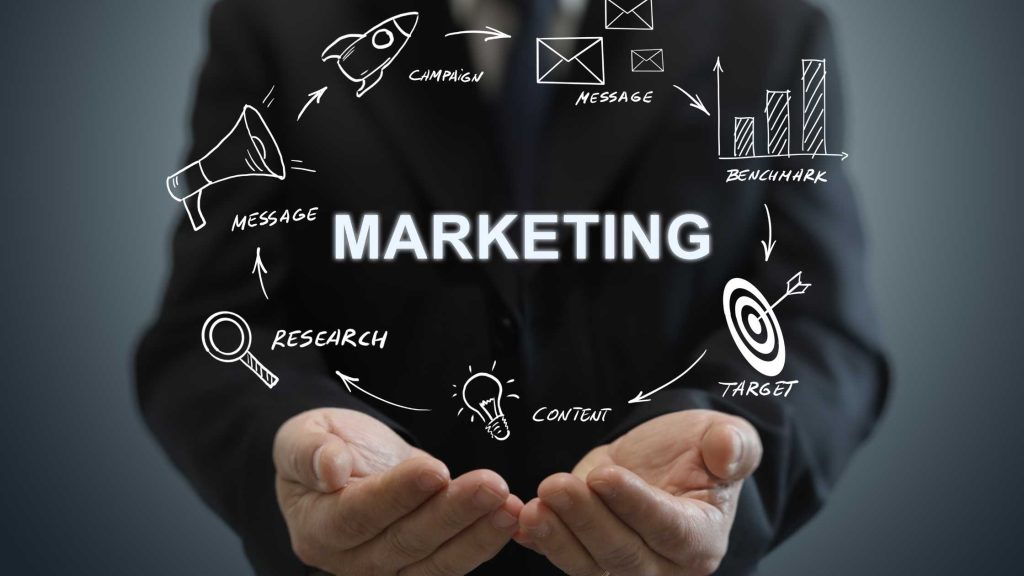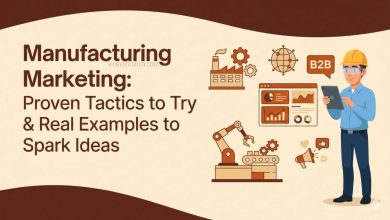Experiential Marketing in 2025 : A Comprehensive Guide
Experiential Marketing : The marketing landscape is undergoing the most transformative shift in its history. We live in a world where consumers are exposed to thousands of ads each day—yet recall only a handful. Traditional marketing has significantly lost its power to engage, influence, and convert customers. In this highly competitive environment, experiential marketing has re-emerged as a dominant strategy that allows brands to stand out, create emotional memories, and build long-lasting relationships with their audiences.
Table of Contents
By 2025, experiential marketing is no longer limited to physical events or pop-up activations. It has evolved into a hybrid ecosystem powered by AI-driven personalisation, immersive technologies like VR and AR, interactive digital storytelling, sensory branding, social commerce, and community-driven experiences. Brands that master experiential marketing build stronger identities, generate powerful user-generated content, and achieve unparalleled audience loyalty.
This comprehensive, 3000-word professional essay explores experiential marketing from every angle: its meaning, significance, modern examples, psychological triggers, advanced strategies, implementation frameworks, best practices, and how brands can adopt this approach to drive high-impact results.
1. What Is Experiential Marketing?

Experiential marketing—also known as engagement marketing, live marketing, or experience-driven marketing—is a strategy that focuses on creating interactive and memorable brand experiences. Instead of telling customers why a brand is valuable, experiential marketing shows them, allowing consumers to actively participate, feel, and connect with the brand.
The core principle is simple:
People forget advertisements, but they remember experiences.
Experiential marketing taps into emotions, senses, and human interactions, making the audience co-creators of the brand story rather than passive spectators.
Key Elements of Experiential Marketing
- Immersive environments
- Participation and interaction
- Emotional engagement
- Multi-sensory stimulation
- Memorable storytelling
- Real-time involvement
- Personalisation and relevance
- Hybrid (physical + digital) integration
Also Read : Manufacturing Marketing : Proven Tactics to Try & Real Examples to Spark Ideas – Comprehensive Guide 2025
2. Why Experiential Marketing Matters in 2025
The digital age has made consumers more informed, selective, and emotionally driven. As a result, they expect brands to offer value beyond product quality or price.
In 2025, experiential marketing is crucial for the following reasons:
A. Decline of Traditional Advertising
Banner blindness, ad-blocking tools, and saturated digital channels have reduced the effectiveness of traditional campaigns.
B. Rise of Emotional Consumer Behaviour
Modern consumers prioritise experience, identity, and emotional resonance over product features.
C. Social Media Amplification
Experiences naturally generate content—photos, videos, reels, stories—which extend brand reach organically.
D. Increased Use of Immersive Technologies
AR, VR, holography, and digital touchpoints enable more creative and memorable engagement.
E. Desire for Personal Connection
People want authenticity. Real experiences build deeper trust than online ads.
F. Higher Retention and Recall
Experiential campaigns activate more senses, improving memory retention and brand recall.
G. Enhanced Word-of-Mouth Marketing
Satisfied participants become brand ambassadors through personal endorsements.
H. Better Differentiation
Experiential marketing creates unique moments competitors cannot easily copy.
3. The Psychology Behind Experiential Marketing
Experiential marketing works because it aligns with core psychological principles that shape human perception and memory.
1. Sensory Activation
Humans remember sensory-rich experiences far better than textual or visual-only messages.
2. Emotional Encoding
Feelings of joy, excitement, or surprise strengthen long-term memory.
3. Social Identity Theory
Consumers love belonging to communities formed around shared experiences.
4. Mirror Neuron Theory
Watching others engage triggers a desire to participate.
5. Story Encoding
Narratives activate multiple neural pathways, increasing retention.
6. Reward and Dopamine Systems
Gamification and interactive elements trigger reward mechanisms that enhance satisfaction.
Understanding these psychological factors helps brands design more impactful experiential campaigns.
4. Best Real-World Examples of Experiential Marketing
Experiential marketing is not theoretical—global brands consistently use it to strengthen identity and increase audience loyalty.
A. Coca-Cola: “Share a Coke” Pop-Up Stations
Coca-Cola allowed consumers to print custom names on bottles. The interactive kiosks created emotional engagement and massive social sharing.
B. Nike: Community Fitness Challenges
Nike hosts marathons, training camps, and shoe trial sessions. The brand connects directly with athletes, promoting lifestyle and performance.
C. IKEA: AR Home Visualisation
IKEA’s AR app lets customers preview furniture in their homes—bridging imagination and reality.
D. Red Bull: Extreme Sports Events
Red Bull built an identity around extreme adventure by sponsoring high-energy events like cliff diving, air races, and stunt performances.
E. Samsung: Immersive Product Launches
Samsung uses VR demos, digital simulations, and holograms to showcase product features interactively.
F. Airbnb: Pop-Up Experiences
Airbnb offers unique themed stays—treehouses, castles, movie-set homes—and transforms accommodation into immersive experiences.
G. G : Interactive Demo Zones
G’s pop-up spaces allow hands-on product testing, interactive games, and voice-assistant tutorials.
These brands prove that experiential marketing strengthens identity, increases loyalty, and builds unforgettable brand moments.
5. Types of Experiential Marketing in 2025

Modern experiential marketing spans both physical and digital domains.
1. Live Events
Product launches, conferences, exhibitions, and workshops.
2. Pop-Up Stores
Temporary branded environments offering exclusive experiences.
3. Interactive Installations
Digital walls, projection mapping, sensor-based engagement.
4. Virtual Reality Experiences
VR-based product demos, virtual tours, or immersive narratives.
5. Augmented Reality Experiences
Try-on features, product visualization, and AR filters.
6. Hybrid Events
Physical events blended with digital participation via apps or live streaming.
7. Gamified Engagement
Games, challenges, competitions, rewards, and point-based systems.
8. Social Media Interactive Campaigns
Digital filters, AI-generated content, AR lenses, hashtag challenges.
9. Community-Driven Experiences
Sports clubs, creator communities, interest groups, and brand clubs.
10. Sensory Branding
Smell, sound, texture, temperature, or flavour-based emotional stimulation.
Buy Now : Ecommerce Website
6. Advanced Strategies for Experiential Marketing
Experiential marketing is most successful when executed with strategic precision. The following strategies ensure maximum impact:
A. Deep Audience Understanding
Analyse:
- Behaviour
- Interests
- Problems
- Emotional drivers
- Technology preferences
Experiences must be tailored to audience needs.
B. Build Emotion-Centric Experiences
Emotion should be at the centre:
- Excitement
- Joy
- Curiosity
- Surprise
- Nostalgia
Emotion enhances connection and memorability.
C. Integrate Immersive Technology
Use AR, VR, mixed reality, AI assistants, holography, and digital sensors to create immersive touchpoints.
D. Make Experiences Shareable
Design experiences visually compelling enough for participants to share organically on social media.
E. Focus on Storytelling
Every experiential campaign needs:
- A beginning
- A tension point
- A transformation
- A resolution
Stories turn experiences into emotional journeys.
F. Personalise Every Interaction
Personalization increases relevance:
- Name-based engagement
- Custom products
- Digital badges
- Personal dashboards
- Preference-based experiences
G. Create Hybrid Ecosystems
Combine physical experiences with digital platforms for extended engagement:
- QR codes
- Mobile apps
- AR filters
- Virtual follow-ups
H. Build Community Participation
Organise experiences that bring people together—such as workshops, support groups, clubs, or activity-based gatherings.
I. Gamify Interactions
Include:
- Scoreboards
- Rewards
- Level-based experiences
- Mystery boxes
Gamification increases motivation and recall.
J. Promote Real-Time Engagement
Use:
- Live polls
- Interactive screens
- Digital kiosks
- Mobile-driven interactions
Real-time involvement increases customer satisfaction.
7. Implementation Framework for Experiential Marketing
A structured execution plan is essential for a successful experiential campaign.
PHASE 1: Research and Concept Development
- Identify the campaign objective
- Analyse audience behaviour
- Research competitors
- Develop the core experience concept
- Model customer journey flow
- Choose the right environment
PHASE 2: Planning and Infrastructure Setup
- Choose location/platform
- Plan layout, designs, and experience zones
- Finalise technology tools
- Arrange vendors and staffing
- Create engagement scripts and storyboards
- Conduct technical testing
PHASE 3: Pre-Launch Promotion
Use:
- Social media teasers
- Influencer previews
- Email marketing
- PR stories
- Countdown campaigns
PHASE 4: Live Activation
- Run the experience
- Use trained staff
- Collect participant data
- Film content for online repurposing
- Capture user-generated moments
- Resolve live feedback
PHASE 5: Post-Experience Engagement
- Send thank-you messages
- Share behind-the-scenes videos
- Offer discount codes or loyalty rewards
- Publish event highlights
- Gather testimonials
- Analyse analytics and measure ROI
8. Best Practices for Experiential Marketing in 2025
To maximise campaign success, brands must follow these essential best practices:
1. Make the Audience the Hero
Shift focus from the brand to the customer experience.
2. Encourage Organic Sharing
Design photo-worthy moments and interactive visuals.
3. Elevate Multi-Sensory Engagement
Incorporate sound, light, texture, smell, or motion.
4. Ensure Accessibility
Experiences must be inclusive and accessible to all.
5. Align with Brand Values
The experience must reflect the brand’s identity.
6. Build Data-Driven Experiences
Use data collection for personalised engagement.
7. Prioritise Safety and Comfort
Smooth, safe experiences build trust.
8. Train Staff Thoroughly
Personnel must understand brand messaging and experience flow.
9. Create Follow-Up Experiences
Keep participants engaged long after the event.
10. Measure ROI Across All Dimensions
Track brand lift, conversions, reach, engagement, and satisfaction.
Conclusion: The Future of Experiential Marketing

Experiential marketing in 2025 represents a strategic evolution in how brands connect with audiences. It transforms marketing from a message-based approach to an experience-based ecosystem. In a world saturated with digital noise, experiential marketing helps brands cut through distractions and create moments that consumers feel, remember, and share.
Brands that invest in immersive storytelling, emotional engagement, community building, and hybrid experiences will dominate their industries. Experiential marketing is not just a trend—it is the future foundation of brand loyalty, consumer trust, and long-term differentiation.
Buy Now : Ecommerce Website
Disclaimer : This content is created for educational and informational purposes only. Businesses should evaluate strategies based on their target audience, resources, and goals. It does not constitute professional marketing, financial, or legal advice.



